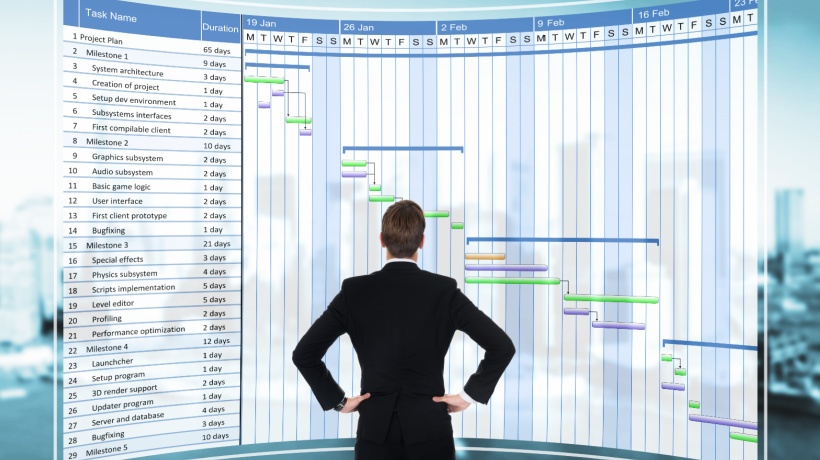Essential Roles In Project Management To Ensure Success
My answer is slightly longer.
The last decade or so has seen dramatic changes in the business environment. Projects have gained strategic importance and are not viewed as just delivery mechanisms anymore. Projects are also usually under enormous pressure to be completed, on time, and under budget. Projects can, thus, make or break organizations if not adequately managed through a proper framework of Project Management processes. As a result, the need for Project Management has seen a massive surge in demand and importance in today’s times. Project Management is much more than keeping the Project Management triangle in check. It has been developed to hold all the people working on the project together towards a vision for success while navigating through the ups and downs, the risks and uncertainties of the project. Having emphasized enough on the importance of Project Management, keeping the right set of people on board is crucial to be able to realize the project objectives and vision.
Here are the 6 critical roles for ensuring a project’s success. These roles could be assigned to one or more individuals, and conversely, individuals may play more than one role depending upon the organization structure and type, as well as the scope of the project and its strategic alignment.
1. Project Manager
Project Managers are primarily responsible for the completion of the project as planned. Depending on the type of project organization, they usually play a lead role in the overall planning, executing, monitoring, controlling, and closing of projects. This includes managing, reviewing, and prioritizing the day-to-day project activities with an objective to stay on time and under budget, as well as managing the project resources. Their responsibilities also include status and executive reporting, risk management, conflict mediation, project communication management, and stakeholder management. Project Managers, typically use Project Management software, such as Microsoft Project, to plan and schedule tasks and provide a framework for Project Management activities. The primary purpose of these Project Management tools is to help Project Managers prepare, execute, and control all aspects of a project or a group of projects with optimal time management.
2. Project Team
The project team comprises of full-time or part-time employees who are assigned to work on different activities and deliverables of the project. They are responsible for contributing to the overall objectives of the project and the specific team deliverables. Having an interdisciplinary team with the right mix of skills and expertise is vital to the smooth and successful execution of any project. Project teams, often identified and constructed by the Project Managers, may comprise of in-house staff from multiple departments, skill sets, and even different geographies. Sometimes, project teams can also include outside suppliers, contractors, or external consultants, who have explicitly been pooled for the project. Their role is to successfully perform the project tasks and activities that have been assigned to them, keeping the Project Managers apprised of the progress, as well as any roadblocks that may arise during the project execution. The project team members use a Project Management software to see what’s on their plate, understand work priorities, report progress and time spent on different activities, and also collaborate with other team members and Project Managers.
3. Steering Committee
The steering committee comprises of management representatives and other high-level stakeholders (people or groups who have a stake, or an interest in the outcome of the project) and oversees the entire project lifecycle, providing guidance on the overall strategic direction. They serve as the 'leadership' support for the project, resolve issues escalated by the Project Manager, and decide on all requests to change key project elements, such as deliverables, schedule, and budget (through the Change Control Board.)
4. Project Client
Clients are the people (or organization/business unit/department, etc.) for whom the project is being undertaken. Whether it is an internal-company project or an external project, every project has a client or a customer, who has a business need that will be satisfied by the successful completion of the project. While the term client generically refers to one or more people from the client’s organization, specific large projects also have a dedicated client Project Manager as a comparable Project Manager to work on the client side. During the course of a project, the client’s role is crucial to the overall success. They play an active role in approving project plans, requesting changes, raising issues and risks, approving milestones, releasing payments, and accepting (or declining) the final deliverables of the project.
5. Project Management Office (PMO)
The Project Management Office aka PMO is a group of people who help build and maintain a set of standards and best practices for internal Project Management, and oversee their adherence across all projects. According to the PMBOK® Guide, a Project Management Office is an organizational structure that standardizes the project-related governance processes and facilitates the sharing of resources, methodologies, tools, and techniques. As more and more projects gain strategic importance, PMOs help to manage and execute them in a more predictable and controlled way, ensuring standardization of Project Management practices to achieve economies of scale and thus improving the overall project success rates.
6. Resource Manager
Albeit smaller in number, many organizations have this role of a dedicated Resource Manager, whose primary responsibility is to manage resource pools assignable to projects. The Resource Manager works for a hand in glove with the Project Manager to coordinate the resource capabilities and workload, and is responsible for assigning the right people to the right projects at the right time. They play an essential role in capacity planning to ensure resource fulfillment to project demands. They are also primarily responsible for skills management, continually assessing the training needs and career development of the employees working on different projects. Interim resource swaps or resource adjustments are also handled by the Resource Managers. A Resource Manager’s role when done well can have a tremendous impact on the organization’s success.
There you have it, the 6 essential roles in Project Management. What are the most common project roles in your organization? Please, share them in the comments!









